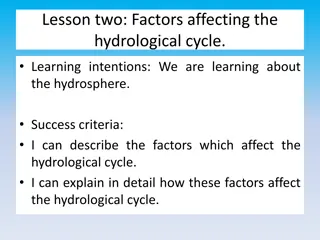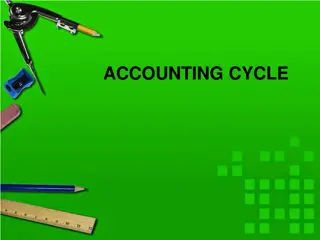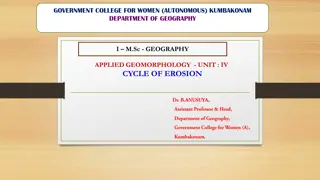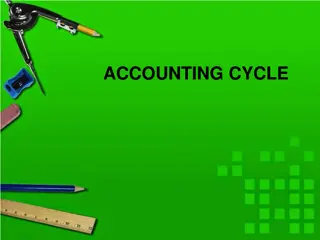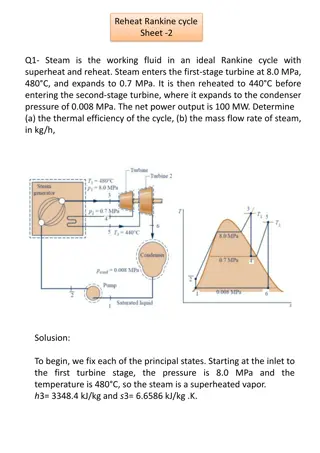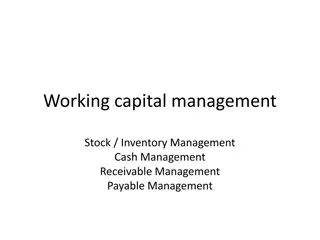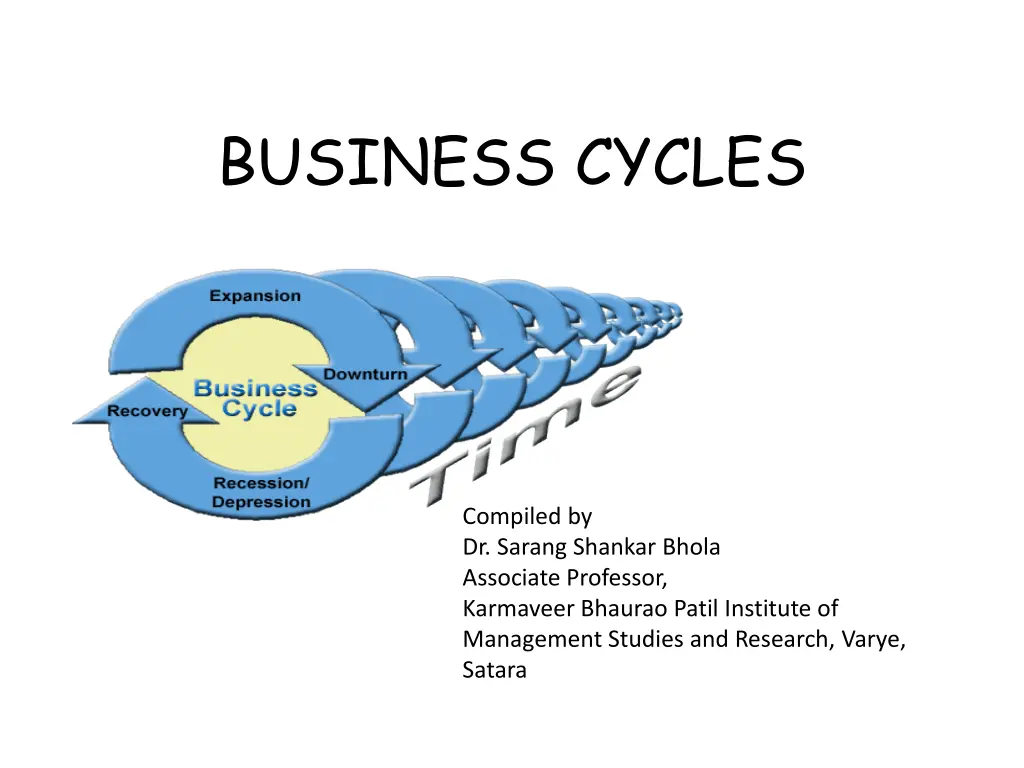
Understanding Business Cycles in Economics
Explore the concept of business cycles in economics, which are wave-like fluctuations in aggregate economic activity, encompassing phases of prosperity and depression. Learn about the features, characteristics, and key definitions of business cycles, as well as the phases and theories associated with them. Dive into the impact of trade cycles on various aspects of economic, political, and social life within a country.
Download Presentation

Please find below an Image/Link to download the presentation.
The content on the website is provided AS IS for your information and personal use only. It may not be sold, licensed, or shared on other websites without obtaining consent from the author. If you encounter any issues during the download, it is possible that the publisher has removed the file from their server.
You are allowed to download the files provided on this website for personal or commercial use, subject to the condition that they are used lawfully. All files are the property of their respective owners.
The content on the website is provided AS IS for your information and personal use only. It may not be sold, licensed, or shared on other websites without obtaining consent from the author.
E N D
Presentation Transcript
BUSINESS CYCLES Compiled by Dr. Sarang Shankar Bhola Associate Professor, Karmaveer Bhaurao Patil Institute of Management Studies and Research, Varye, Satara
The term trade cycle in economics refers to the wave like fluctuations in the aggregate economic activity, particularly employment, output and income. These ups and downs in economic activity are wave like fluctuations which occur more or less in a regular manner and are referred to as Business Cycles or Trade Cycles. Business cycles are the characteristics feature of the market economies (Capitalist System).
The major and important definitions of the concept are Benham Trade cycle is a period of prosperity followed by a period of depression. Mitchell: A fluctuation in aggregate economic activity is a trade cycle. Haberler: The business cycle in the general sense may be defined as an alternation of period of prosperity and depression of good and bad trade. Frisch, Tinbergen and A.C.Pigou: Business cycle is a wave- like movement caused by those outside forces which operate upon the economy in such a manner that the latter starts moving in a wave like manner. J.M.Keynes: A trade is composed of periods of good trade characterized by rising prices and low unemployment percentages, altering with periods of bad trade characterized by falling price and high unemployment percentages. Prof. Estey: Cyclical fluctuations are characterized by alternating waves of expansions and contractions. They do not have a fixed rhythm, but they are cycles in that the phases of contractions and expansions recur frequently and in fairly similar patterns.
Features or Characteristics of Business Cycle A trade cycle is a wave like movement in aggregate economic activity. It is featured by alternation of expansion (prosperity) and contraction (depression) in economic activity. Cyclical fluctuations are recurrent in nature. Expansion and contraction in a business cycle are cumulative in nature. Each upswing or downswing of a cycle is self-reinforcing. A trade cycle contains self-generating forces that tend to terminate the phase of prosperity or depression. Trade cycles affect every segment of the economic, political and social life of a country. A trade cycle is characterized by the presence of crisis; the peak and the trough are not symmetrical. In cyclical fluctuations, prices and production rise or fall. According to Harberler, a) the cyclical fluctuations move parallel with production and monetary demand, b) they are more marked in capital goods industry than in consumer s goods industry. Trade cycles differ in timing and amplitude but have common pattern of phases, which are sequential in nature. Trade cycles differ in length and relative prominence.
Phases of Business Cycle .. Theories of Business Cycle Hawtrey s Monetary Theory .. Hicks Theory of Business Cycle ..
Control of Trade Cycles Monetary Measures Fiscal Measures
Monetary Measures Bank Rate: The central bank brings about necessary changes in the bank rate, taking into consideration the state of trade cycle. The increase in bank rate enables to control the state of prosperity, and its decline facilitates the withdrawal of the economy from the depression. Cash Reserve Ratio: The variable cash reserve ratio endeavors to regulate the supply of money as per the need of the economy. Increase in cash reserve ratio restricts credit expansion and controls the state of prosperity. Depression can be controlled by decreasing the cash reserve ratio. Open Market Operation: The sale of securities in the market during the prosperity controls credit expansion as well as growing demand for goods, and restricts the state of prosperity. The purchase of securities facilitates the removal of the economy from the state of depression. Selective/Qualitative Measures: besides the above discussed qualitative credit control measures, the selective or qualitative credit control measures like fixation of margin between loans and security, rationing of credit, control through directives, moral suasion, publicity, direct actions are useful in controlling business cycles with their necessary applications.
Fiscal Measures Taxation: The necessary changes in the taxation policy of the economy facilitate the control of the trade cycles. Increase in taxation is suggested to control the prosperity and its reduction is useful in restricting the depression. Public Expenditure: an appropriate public expenditure policy is a fiscal measure useful in controlling the trade cycles. The policy of cut down in public expenditure is suggested to arrest the state of intensive prosperity or inflation. Conversely, increase in public expenditure is conductive to withdraw the economy from the depression. Public Debt: The government should attempt to raise more and public debt, especially the internal debt, which reduces the purchasing power of the people, their demand for goods, and controls the prosperity by restricting the rapidly growing prices. On the contrary, the repayment of public debt by the government is favourable to control the gravity of the depression. Budgetary Policy: it is an effective fiscal measure, which is suggested to bring about economic stability in the economy. The policy of surplus budget is useful to control the prosperity, and deficit budget is desirable in restricting the rapidly growing depression. Savings Policy: the policy of voluntary as well as forced saving is suggested to control the greater gravity of the state of prosperity, especially the inflation. Conversely, discouraging saving is of very much use so as to deal with the depression.
Other Measures Production Policy: the necessary production policy of the government or an economy can control the trade cycles and their phases. The policy should attempt to promote the output during the prosperity and to curtail the output in depression. Price Policy: the policy of price control is useful in tackling the problem of trade cycles. The government should fix upper and lower limits within which only the pries will fluctuate. Wage Policy: an appropriate wage policy is a measure, which is suggested and useful to deal with the economic instability. The policy of hike and reduction of wages should be adopted during the prosperity and depression respectively. Unemployment Insurance Scheme: the government should collect unemployment insurance fund from the workers, especially during the prosperity. This fund can be utilized to compensate the workers during their unemployment in depression. Socialist Economy: The problem of trade cycles is part and parcel of the capitalist economy, due to lake of cooperation and coordination in economic decision making. Hence the socialist economy featured by the government decision making is useful in tackling this problem.


